Our favourite places to stay on this sleepy Cebu island.
Manila Commute Guide: How To Use Jeepneys, Tricycles, Buses And More
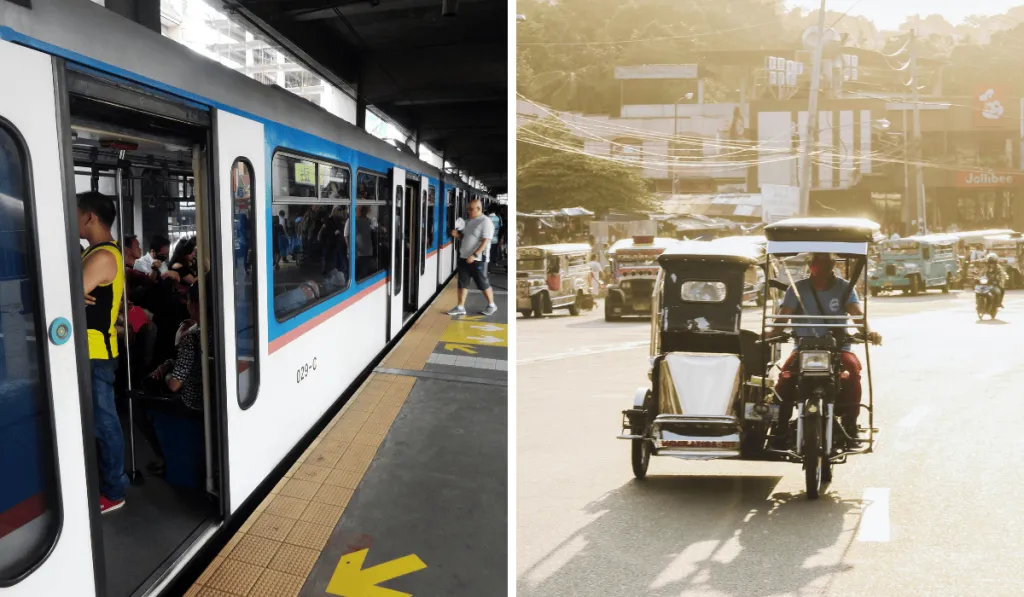
Planning a trip to Manila? This dynamic capital of the Philippines is packed with culture, street food, historic landmarks, and buzzing energy. But with all the hustle and bustle, figuring out how to get around Manila can be a little tricky, especially if you’re visiting for the first time. Good news: the city has a wide range of public transportation options, and once you know how they work, it’s surprisingly easy (and cheap) to move around.
Also read: 10 Best Free Things to Do in Manila in 2025
Here’s a practical guide to help you explore Manila’s transport system like a local, without burning through your travel budget.
Jeepneys: The most iconic way to travel around Manila
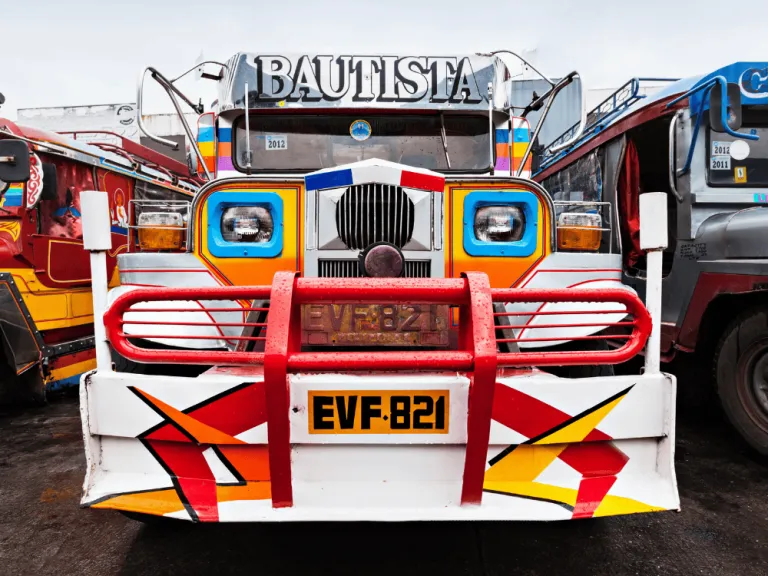 Jeepneys | Andrey X via Canva Pro
Jeepneys | Andrey X via Canva Pro
A visit to the Philippines wouldn’t be complete without experiencing a ride in a jeepney. These colourful, customised vehicles are more than just transport—they’re a symbol of Filipino culture. As far as Manila's public transport goes, jeepneys are among the cheapest, with fares starting at only ₱15.
They follow specific routes but stop almost anywhere. Simply say “Para” when you want to get off. It may feel a bit chaotic at first, but jeepneys offer an authentic way to see the city and mingle with locals.
Tricycles (Traysikels): Quick and convenient for short distances
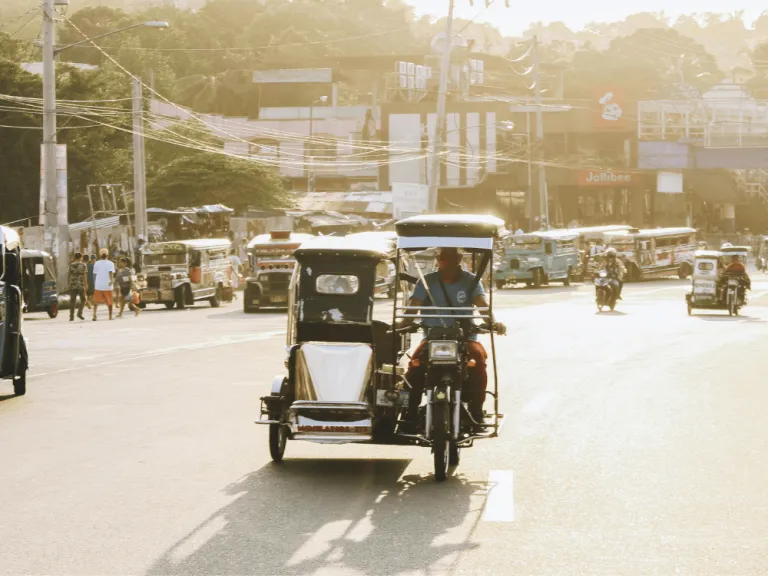 Tricycles | Lawrence Biñas via Pexels
Tricycles | Lawrence Biñas via Pexels
For neighbourhood trips or areas not covered by jeepneys, tricycles (locally called traysikels) are your best bet. These motorbikes with sidecars can zip through tight streets and bring you right to your doorstep. Fares are negotiable, so don’t be shy to haggle a bit. While not ideal for long journeys, they’re perfect for quick errands or rides to nearby spots.
LRT and MRT: Fast and affordable train travel
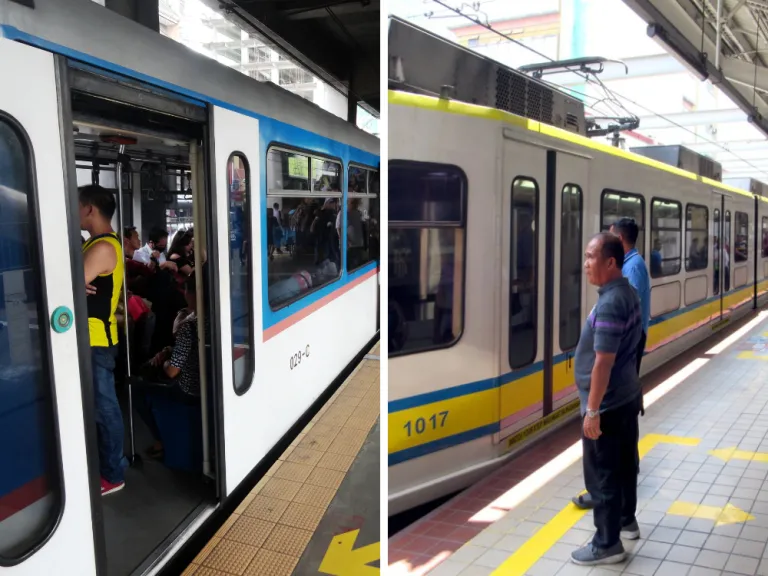 (L-R) MRT | Fabio Achilli; LRT | David Stanley via Flickr
(L-R) MRT | Fabio Achilli; LRT | David Stanley via Flickr
If you're travelling longer distances across the metro, the LRT (Light Rail Transit) and MRT (Metro Rail Transit) are your go-to options. These trains cut through traffic and cover major parts of the city, including stops near shopping malls, universities, and tourist sites.
Fares range from ₱16 to ₱30, and they run from early morning until around 9:30 PM. For convenience, get a Manila Beep card, a stored value card that makes boarding easier and avoids the hassle of buying single tickets each time.
Buses: Covering a wide range of routes
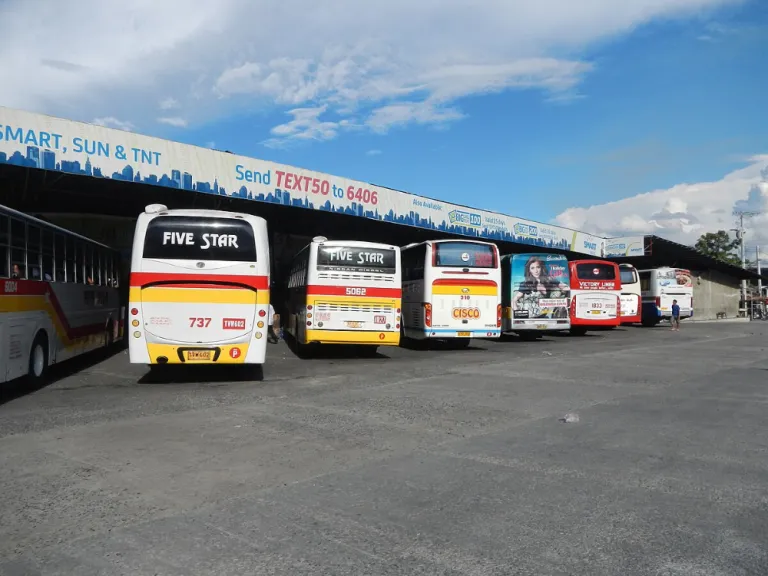 Buses | Judge Floro via Wikimedia Commons
Buses | Judge Floro via Wikimedia Commons
Manila buses run on various city and provincial routes, with fares starting around ₱12. They’re affordable, but expect some crowding during rush hours. Make sure to bring exact change, and if you're unsure where to get off, don’t hesitate to ask the driver or a fellow passenger.
Taxis: Comfortable, but be cautious
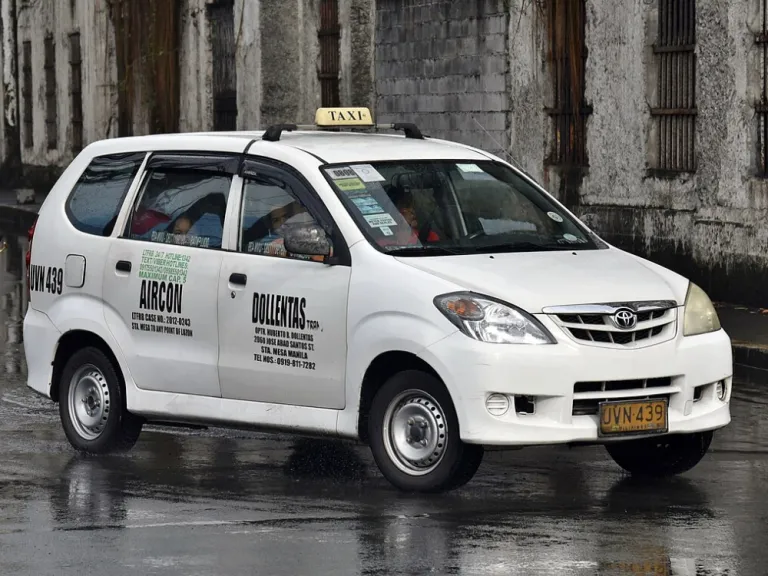 Taxis | Bahnfrend via Wikimedia Commons
Taxis | Bahnfrend via Wikimedia Commons
Manila taxis are widely available and a more comfortable option, especially if you’re travelling with luggage or during late hours. They’re usually white with yellow plates and operate on a metered fare system, starting at ₱50. Always insist on using the meter to avoid being overcharged.
PRO TIP: For extra safety and convenience, particularly if you're new to the city, it's best to use ride-hailing apps.
Ride-Hailing Apps: Safe, transparent, and efficient
Apps like Grab, Angkas, and Joyride are popular in Manila. These are especially handy for travellers who prefer cashless payments, fare transparency, and door-to-door convenience. Angkas and Joyride offer motorbike taxis, which are a great way to weave through traffic during rush hour.
Pasig River Ferry: A scenic escape from the traffic
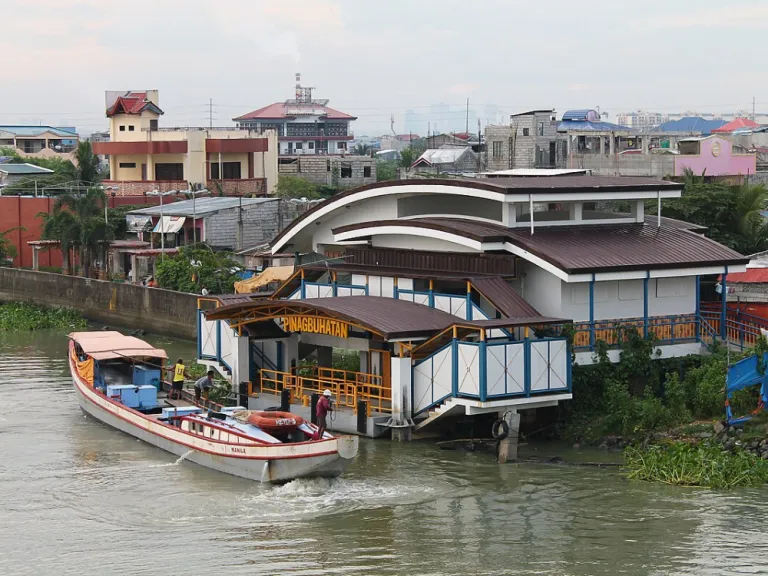 Pinagbuhatan Station, Pasig River Ferry | Elmer B. Domingo via Wikimedia Commons
Pinagbuhatan Station, Pasig River Ferry | Elmer B. Domingo via Wikimedia Commons
For a more relaxed commute, the Pasig River Ferry offers a unique way to get around. It’s not just scenic, it’s practical, with stops in key locations such as Makati and Intramuros. It’s rarely crowded, surprisingly affordable, and lets you take in Manila from a different point of view.
Walking and cycling: Explore Manila up close
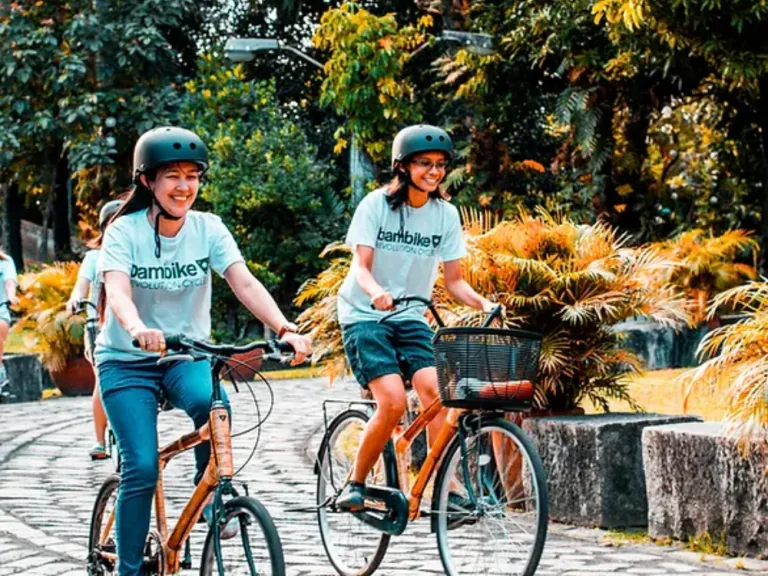 Image credit: Bambike Official Website
Image credit: Bambike Official Website
Neighbourhoods like Intramuros and Binondo are best explored on foot. Walking gives you the chance to discover hidden cafes, colonial architecture, and lively street food corners.
If you’re feeling adventurous, cycling is growing in popularity. You’ll find bike rentals in Manila near parks and tourist spots, and bamboo bike tours in Intramuros are an eco-friendly and fun way to explore.
Budget tips and cultural etiquette for commuters
To stretch your travel budget further, use multi-ride cards for the LRT/MRT and avoid commuting during peak hours. Chatting with locals can also lead to valuable advice on the best routes and fares.
A few local customs to remember: say “Salamat” (thank you), offer your seat to the elderly or pregnant, and keep a respectful distance from others. A friendly smile goes a long way here.
Also read: Best Picnic Spots in Metro Manila for a Relaxing Weekend
Final thoughts
Getting around Manila doesn’t have to be overwhelming. With jeepneys, trains, buses, ferries, and bike tours at your disposal, you can enjoy the best of the city without spending a fortune. Embrace the local way of travel and let every ride become part of your Manila adventure.
Published at
About Author
Jennylene Dela Cruz
Subscribe our Newsletter
Get our weekly tips and travel news!
Recommended Articles
10 Bantayan Island Resorts, Hotels, and Rentals for Your Tropical Escape 10 Best Banawe Restaurants for a Mouthwatering Food Trip in QC The promise of new flavours beckons from Banawe.
14 Best Credit Cards for Travel in the Philippines The only plastic we need for travel.
10 Best Mountain Cafes in the Philippines for Your Peak Coffee Experience Coffee date on the mountains, anyone?
10 Best Things to Do in Los Angeles Los Angeles is more than Hollywood stars. From hikes with killer views to beaches straight out of a rom-com, here are 10 must-do LA experiences for Filipino travellers or any wanderers in general!
Latest Articles
Manila’s New Philippine Biodome Opens: Attractions, Tickets, and What to Expect Aurora Borealis in Manila?! Yes, even small-clawed otters, parrots, scarlet ibis, and other beautiful wildlife can be seen in Manila's Philippine Biodome! Read in full to see ticket prices.
Trump to Ban Obese Immigrants and Special Needs Children from U.S. Trump soon to ban fat people and kids with special needs from entering U.S.
Google Pay Launch in the Philippines Lets Everyone Pay Securely, Filipino Travellers Benefit Most Tap to pay securely
Why Filipino Travellers Are Choosing eVisas Over Traditional Visa Applications How digital visas make travel easier
Fhukerat Offloaded in Dubai: What Travellers Must Know About UAE Entry Rules Why a Filipino vlogger was refused entry and what travellers should know before visiting Dubai.

